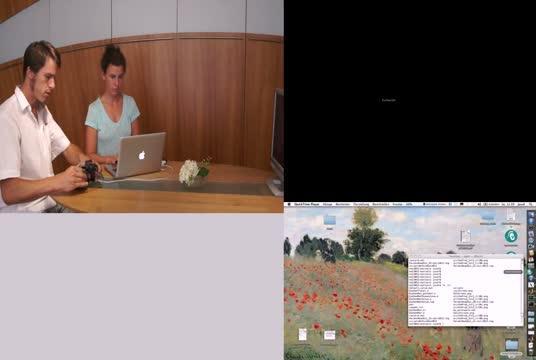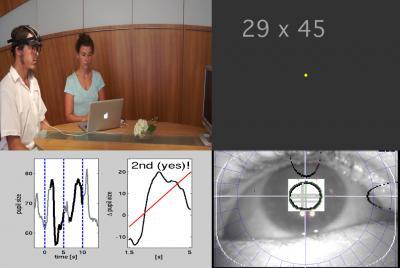The researchers asked healthy people to solve a math problem only when the correct answer to a yes or no question was shown to them on a screen. The mental load associated with solving that problem caused an automatic increase in pupil size, which the researchers showed they could measure and translate into an accurate answer to questions like "Are you 20 years old?"
They then tested out their pupil response algorithm on seven "typical" locked-in patients who had suffered brain damage following a stroke. In many cases, they were able to discern an answer based on pupil size alone.
"We find it remarkable that the system worked almost perfectly in all healthy observers and then could be transferred directly from them to the patients, with no need for training or parameter adjustment," Einhäuser says.
While the system could still use improvement in terms of speed and accuracy, those are technical hurdles Einhäuser is confident they can readily overcome. Their measures of pupil response could already make an important difference for those who need it most.
"For patients with altered state of consciousness—those who are in a coma or other unresponsive state—any communication is a big step forward," he says.

This is a demonstration of the system, setup, and first question. Top left: system as viewed from the outside, the user watches a computer screen, which is visible at the right end of the picture. Top right: view of stimulus presented on this screen. Bottom left: online analysis of pupil trace. Bottom right: operator screen, footage of the pupil (note that this video can be slightly lagging compared to the rest of the video for technical reasons). Audio track: question read out by the operator ("Is you name Josef?"), 5 s later the system reads out the first response option ("non" -- no), another 5 s later the system reads out the second response option ("oui" -- yes, which is correct in this case). Note that while the current system uses a head-mounted eye-tracker (the EyeSeeCam) for practical reasons, in principle any camera will do.
(Photo Credit: Current Biology, Stoll et al.)

This is a still frame, depicting essentially the final frame of the movie, only that in the upper right the computation is still depicted.
(Photo Credit: Current Biology, Stoll et al.)
Source: Cell Press